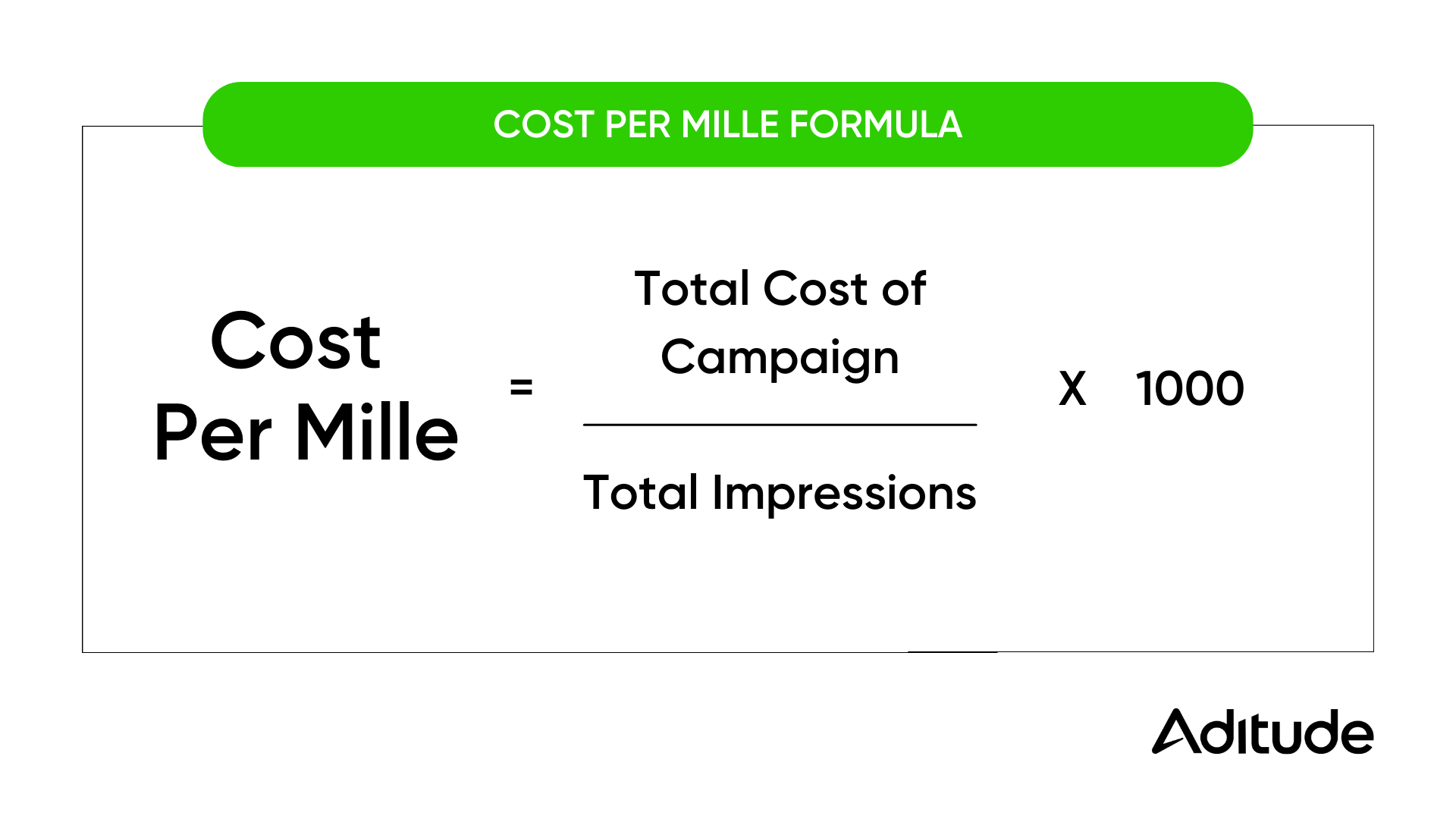CPM Calculator
CPM (cost per mille) is a paid advertising option where companies pay a price for every 1,000 impressions an ad receives. An “impression” refers to when someone sees a campaign on social media, the search engines or another marketing platform. The Total Revenue below is total cost of the campaign.
Understanding Cost Per Mille (CPM)
In the ever-evolving landscape of programmatic advertising, understanding the intricacies of pricing models is crucial for advertisers and publishers alike. Among these models, Cost Per Mille (CPM) stands out as a fundamental metric that shapes advertising strategies and revenue streams.
This article explores the essence of CPM, its importance, calculation methods, average rates, benefits, challenges, and comparisons with other advertising metrics.
What is Cost Per Mille (CPM)?
Cost per mille, or CPM, is a pricing model prevalent in digital advertising. Advertisers pay a predetermined rate for every 1,000 ad impressions, which occur each time an ad is displayed to a user, whether on a webpage or within an app. CPM serves as a fundamental metric in the programmatic advertising landscape, facilitating the exchange of ad inventory between advertisers and publishers.
How to Calculate CPM
Calculating CPM involves a straightforward formula:

This yields the cost incurred for every 1,000 impressions served. Both advertisers and publishers utilize CPM calculations to estimate campaign costs and potential revenue from ad placements, thus optimizing their advertising strategies.
Benefits of CPM
CPM offers a multitude of benefits for advertisers and publishers alike, which are:
- Broad Reach: CPM prioritizes exposure, allowing advertisers to amplify brand awareness among diverse audiences.
- Transparent Pricing: The fixed-rate model fosters clarity and predictability in campaign budgeting, enhancing financial management for advertisers and revenue forecasting for publishers.
- Scalability: CPM offers scalability, enabling stakeholders to adjust campaign parameters and allocate resources efficiently based on performance metrics.
- Ease of Optimization: The simplicity of the pricing structure facilitates easy comparison of channels and media sources, empowering advertisers to refine targeting strategies and enhance campaign effectiveness.
- Brand Building: CPM provides a platform for brand building by maximizing visibility and association, thereby fostering long-term brand recognition and loyalty among consumers.
Challenges of CPM
Despite its merits, CPM presents certain challenges that necessitate careful consideration. These include:
- Lack of Engagement Data: CPM's focus on impressions may obscure crucial engagement metrics, hindering advertisers' ability to assess the effectiveness of ad placements and optimize campaign strategies accordingly.
- Attribution Difficulties: Correlating ad exposure with conversions presents challenges in accurately attributing actions to specific ads, complicating ROI analysis and campaign evaluation.
- Fraudulent Activities: The prevalence of fraudulent practices, such as bot-generated impressions, poses a risk to advertisers, leading to inflated impression counts and diminished campaign performance if left unchecked.
- Seasonal Variations: CPM rates may fluctuate seasonally, with heightened competition during peak periods leading to increased costs and potentially impacting campaign ROI.
- Ad Fatigue: Overexposure to ads can result in ad fatigue among users, leading to diminished effectiveness and potentially negative brand perceptions. Effective frequency capping is essential to mitigate this risk and maintain campaign relevance.
CPM vs. eCPM
While both CPM and eCPM (Effective Cost Per Mille) are crucial metrics in digital advertising, they serve distinct purposes and provide unique insights into campaign performance and revenue generation. Here are their key differences:
- Focus: CPM focuses solely on the cost of ad placements based on impressions served. At the same time, eCPM considers the revenue generated from those impressions, considering engagement metrics such as clicks and conversions.
- Calculation: CPM is calculated based on the advertiser's perspective, considering the cost of ad placements, while eCPM is calculated from the publisher's perspective, reflecting the revenue generated from ad impressions.
- Insights: CPM provides insights into the cost of reaching audiences, while eCPM offers insights into the revenue-generating potential and effectiveness of ad placements for publishers.
While CPM and eCPM are related metrics, they offer distinct perspectives on ad performance and revenue generation in digital advertising. Understanding and leveraging their differences enables advertisers and publishers to optimize their strategies and achieve their respective objectives.
Best Practices to Improve CPM
Optimizing CPM entails a strategic approach encompassing:
- Audience Targeting: Refine audience targeting strategies to ensure ads reach the most relevant and receptive audiences, maximizing engagement and CPM performance.
- Ad Placement Optimization: Identify high-performing ad placements and prioritize them to maximize visibility and effectiveness while minimizing exposure to low-performing placements.
- Frequency Capping: Implement frequency capping measures to mitigate ad fatigue and optimize campaign performance by limiting the number of times an ad is shown to individual users within a specified timeframe.
- Creative Enhancements: Optimize ad creatives to maintain relevance, captivate audiences, and drive engagement, maximizing CPM performance and campaign effectiveness.
- Seasonal Adjustments: Adjust campaign strategies and budgets seasonally to capitalize on peak periods of consumer engagement and minimize the impact of increased competition on CPM rates.
- Performance Monitoring: Regularly monitor campaign performance metrics, including CPM, to identify trends, opportunities, and areas for optimization, ensuring ongoing campaign success and ROI maximization.
Conclusion
In conclusion, CPM is a linchpin in programmatic advertising, guiding strategic decisions and shaping revenue streams for advertisers and publishers. A nuanced understanding of CPM's intricacies and challenges allows stakeholders to navigate the dynamic landscape of digital advertising confidently.
At Aditude, we recognize the pivotal role of CPM in driving advertising success. Our cutting-edge reporting and analytics platform, Insights, empowers advertisers and publishers with real-time insights into CPM performance, enabling informed decision-making and maximizing ROI. With Aditude, unleash the full potential of your digital advertising campaigns and elevate your CPM performance to new heights.